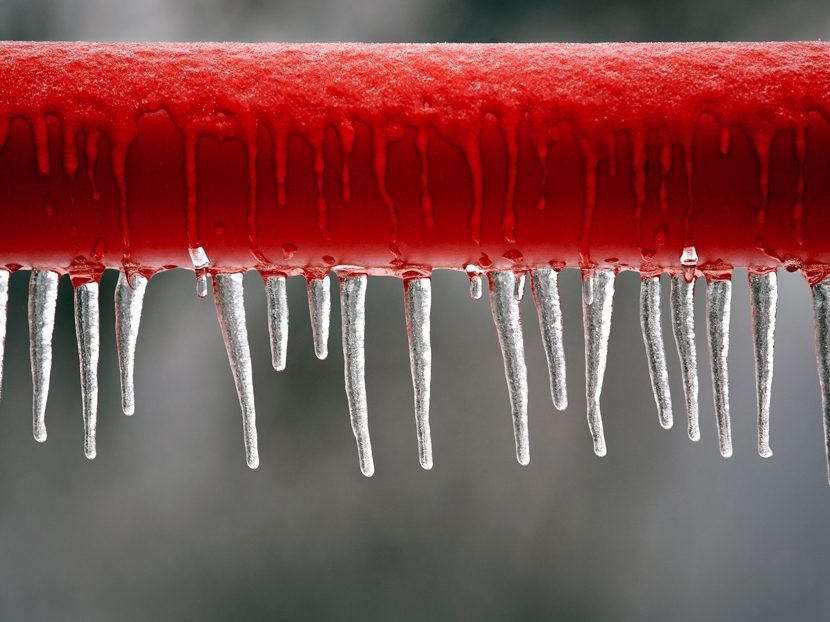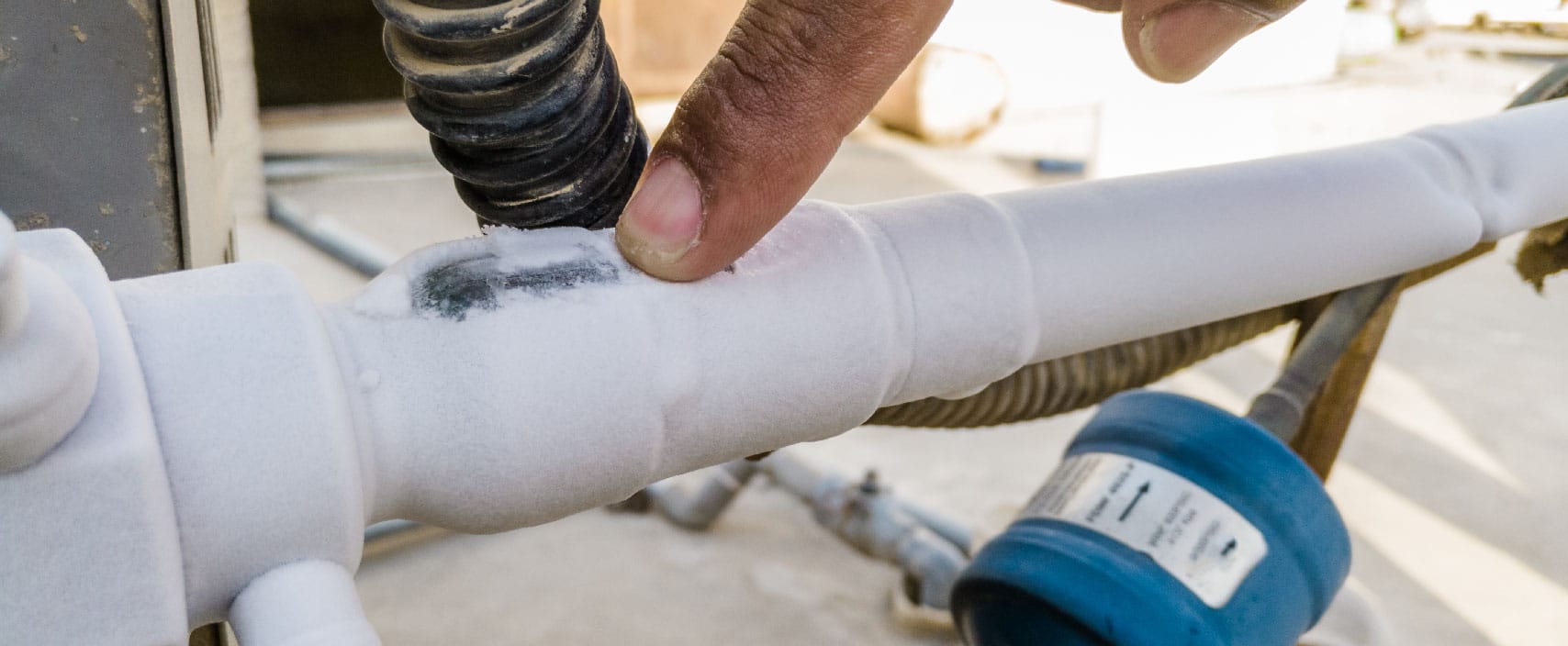Frozen AC Pipe - Identifying and Fixing the Issue Promptly
Frozen AC Pipe - Identifying and Fixing the Issue Promptly
Blog Article
The content following next relating to What Do I Do If My AC Pipe Is Frozen is amazingly entertaining. Read it yourself and decide what you think about it.

Intro
Uncovering that your a/c pipe is iced up can be worrying, specifically during warm summer season when you rely on your air conditioning system the most. Understanding what to do in such a scenario is vital to prevent further damages to your air conditioning system and ensure your comfort indoors.
Recognizing the Causes
Numerous aspects can contribute to the freezing of an a/c pipeline. Comprehending these reasons can assist you deal with the problem successfully.
Absence of Airflow
One common reason for a frozen air conditioner pipeline is inadequate airflow. When the airflow over the evaporator coil is limited, it can trigger the coil to go down below freezing temperature, bring about ice development on the pipe.
Low Refrigerant Levels
Insufficient refrigerant levels in your air conditioner system can also cause a frozen pipeline. Reduced cooling agent degrees can cause the pressure in the system to drop, causing the cold of moisture on the evaporator coil.
Cold Weather Conditions
In cooler climates, freezing temperatures outside can add to the cold of AC pipes. If your a/c device is not correctly insulated or if there are leakages in the ductwork, cool air can infiltrate the system, creating the pipe to ice up.
Dirty Air Filters
Unclean or stopped up air filters can limit air flow in your air conditioner system, bring about various issues, including an icy pipeline. It's important to change or clean your air filters on a regular basis to guarantee appropriate airflow and avoid ice buildup.
Indicators of a Frozen A/c Pipe
Recognizing the indications of an icy a/c pipe is important for punctual activity.
Reduced Airflow
If you see a considerable reduction in air movement from your vents, it could suggest an icy pipe.
Ice Buildup on the Pipe
Visible ice accumulation on the cooling agent line or the evaporator coil is a clear indication of a frozen air conditioner pipe.
Unusual Sounds from the Unit
Unusual audios, such as hissing or gurgling, originating from your air conditioner unit can signal that there's ice existing on the pipe.
Immediate Actions to Take
When confronted with an icy AC pipe, it's essential to act promptly to avoid more damage to your air conditioning system.
Shutting off the air conditioning
The first step is to switch off your air conditioning system to avoid the system from running and aggravating the concern.
Checking for Blockages
Examine the area around the indoor unit for any type of obstructions that may be blocking airflow, such as furnishings or drapes.
Defrosting the Pipe
You can utilize gentle techniques like positioning towels taken in warm water around the frozen pipe to assist thaw it slowly.
Preventive Measures
Taking preventive measures can help avoid future occurrences of an icy AC pipeline.
Normal Maintenance Checks
Arrange regular upkeep talk to an expert HVAC specialist to ensure that your air conditioning system is running successfully.
Altering Air Filters
Frequently change or clean your air filters to stop airflow limitations and keep optimal performance.
Protecting Exposed Pipes
If your air conditioner pipes are subjected to cool temperature levels, take into consideration insulating them to prevent freezing during winter season.
Looking For Professional Help
If DIY approaches fail to fix the problem or if you're unclear concerning just how to continue, it's finest to seek support from a qualified HVAC specialist.
When DIY Methods Fail
If your attempts to thaw the pipe or address other concerns are not successful, it's time to call a professional.
Importance of Hiring a Professional HVAC Technician
A certified HVAC professional has the proficiency and devices needed to identify and fix issues with your air conditioning system securely and effectively.
Conclusion
Taking care of an icy air conditioning pipeline can be a frustrating experience, but recognizing exactly how to respond can help lessen damages and recover comfort to your home. By recognizing the causes, identifying the signs, and taking punctual action, you can properly address the problem and protect against future occurrences.
Frozen AC Line: Why It Happens & What To Do About It
A frozen AC line can be a rather peculiar sight in a place like Phoenix, Arizona where nothing ever freezes. In this post, we’ll discuss what makes an air conditioner line frozen – and what you can do about it.
Dirty Air Filters
Did you know that you should be cleaning or replacing your air filters on a monthly basis? Failing to do this can result in airflow issues that, in turn, cause your evaporator coils and lines to freeze over. You’ll notice a buildup of ice on both components, although the buildup on your pipes will, of course, be more evident unless you open your air condition up to reveal the coils.
What To Do About It
Give your air filter a good cleaning if it’s reusable. If not, replace the filter outright. Next, switch your air conditioner’s fan setting on and leave it there for 2-3 hours. This will draw warm air in, helping to thaw your evaporator coil. You can also check out this article for some tips on cleaning the coils themselves if you’d like to speed the process up. Before you switch the unit back to its normal state, make sure the supply vents are completely unobstructed and free of dust or other debris.
If you keep having this issue even after replacing your filters regularly, contact a local HVAC repair company and have them inspect your evaporator coil, ductwork, and any other components that may be at fault. If you live in the Phoenix, Arizona area, give American Home Water and Air a call.
Low Refrigerant Levels/Leakage
What To Do About It
Contrary to what air conditioner “recharge” companies often tell their clients about refrigerant, it should never need to be simply refilled. You see, refrigerant runs in what experts refer to as a “closed loop.” Refrigerant really shouldn’t be leaving that loop. If it is, you’ve got a leak.
Paying someone to come and pump more refrigerant into your system (aka “recharge” it) isn’t the solution. Doing that will simply kick the can down the road. Besides, refrigerant leaks can be harmful to the environment and people in your home.
Rather, you need to take care of the leak with the help of a technician. Check out this article for some more information about dealing with air conditioners that are leaking refrigerant. Before you contact a technician, switch your thermostat to the off position. Then, switch the fan setting on and let it run for 2-3 hours so the unit can thaw.
Improper Temperature Setting
Improper temperature settings can also cause a drop in your air conditioner’s pressure. What many people don’t realize is that air conditioners are actually designed to run when temperatures have fallen above roughly 60 degrees Fahrenheit. If you run the unit when it’s cold outside, you’ll run into many issues, including frozen components.

We were introduced to that report about What Do I Do If My AC Pipe Is Frozen through a good friend on a different domain. Are you aware of another person who is very much interested in the subject? Be sure share it. Thank you so much for taking the time to read it.
This Site Report this page